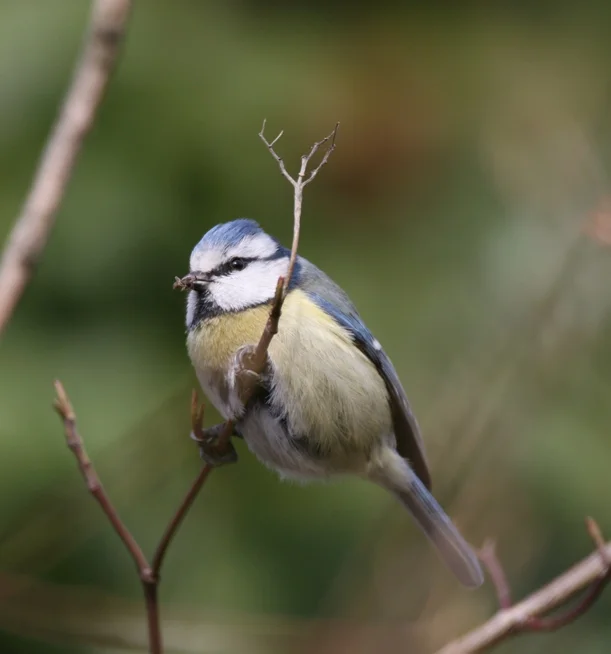BLUE TIT (Cyanistes caerulius) - Mésange bleue
Summary
Found in most habitats below 1500m and a common garden bird in the lowlands. The song is a complex mixture of a harsh “churr” preceded by high-pitched notes:
© Arlette Berlie
The Blue Tit is a bird of woodlands, preferring broad-leafed (deciduous) trees and so is normally found below 1500m in Switzerland and this makes it more common in the plains of the north than in the Alps, although in summer it ventures higher and has been recorded as breeding at 1500m when it clearly then uses coniferous trees. But of course it is famous for its adaptation to human habitation, scavenging and scrounging edible scraps, and is perhaps the most frequent visitor to bird tables in the winter months. Despite being so common it is not very noticeable from its voice, and this is something I have puzzled over. The song itself is rather hard to identify, being pretty much an evolution of several other calls this bird uses, and those other calls in turn are very similar to the calls of other tits with which it mixes very freely, so it all gets very confusing - it is almost as though you don't realise it is singing until it does it right in your face! Broadly it sounds rather like a Great Tit but with the volume turned down.
© Arlette Berlie
The song consists of two parts, two or three very quick high notes followed by a rhythmic churring or chuckling trill (and as you will read below there is actually a very hard to hear third part). This following example shows you in the first part how the "tseeps" and trills may each be used on their own.
Here is a cleaner example of the song which has just one high introductory note followed by a bright musical trill:
and here is the sonogram of that song, the high first note is quite clear but on the sonogram there seems to be a second note which connects the first one to the trill, I can see it but find it hard to hear given the fact that it is all over in a little more than a second
© Arlette Berlie
Here is another example this time I can hear at least two introductory notes followed by a harsher less musical trill, I can also hear a couple of those linking notes between the high introduction and the trill:
and the whole thing becomes clearer by looking at the sonogram (use the pause button on the player to study it) where you can see there are actually three introductory notes, three linking notes and then the trill:
and here is a still picture from that with the three parts labelled:
I hope that was not too complicated - the main thing to remember: a couple of high squeaks followed by a trill = Blue Tit song. But as you can tell from the above examples exactly how this pattern is sung can vary a lot between individuals. The literature tells us that the females as well as the males will sing on their territory, but telling the two sexes apart in the field (the female is a bit duller in colour) is worse than trying to understand the song!
Once again though, the song is only one part of their verbal repertoire, here is one giving calls that could easily be confused with a Great Tit :
(that was a Chiff Chaff singing in the background).
Here is a pair keeping contact whilst in a feeding flock - these high-pitched "tseeps" are like the introduction to a song, but used on their own like this are very similar to a host of other species and not easily identifiable:
A churring version of the trill part of the song is also used as an alarm or annoyance call, here are two Blue Tits mobbing a Red-Backed Shrike
So just give a thought to these complexities when you see this little fellow tumbling around on your peanut feeder !
Studies of a casualty © Frank Jarvis








